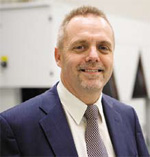The decline of the UK construction industry has taken its toll on the country’s HVACR sector.
The decline of the UK construction industry has taken its toll on the country’s HVACR sector, which is experiencing sluggish growth mainly driven by refurbishment or replacement projects. Valeria Camerino reports.

The UK HVACR market has been heavily hit by the downturn, and there are no major signs of recovery yet.
“The industry has not picked up and business is still slow. The splits market is expected to witness single digit growth at best,” David Garwood, HVAC specialist at test, instruments, research and consultancy organisation BSRIA reveals.
He says that the key feature of the UK air conditioning market is that it is a commercial market and follows trends in the commercial office construction sector.
Indeed, owing to the country’s climatic conditions, residential sales of fixed air conditioning are very low.
 “The UK construction sector is fairly flat at present which has having a dramatic effect on comfort type cooling and the public sector is seriously being affected by austerity measures,” Clive Parkman, Managing Director of Leeds-based Airedale International Air Conditioning says.
“The UK construction sector is fairly flat at present which has having a dramatic effect on comfort type cooling and the public sector is seriously being affected by austerity measures,” Clive Parkman, Managing Director of Leeds-based Airedale International Air Conditioning says.
Although the UK residential construction sector is depressed due to economic environment, the commercial segment is still driven by longer term profitability, particularly in London, Allan Westbury, Chief Executive of S & P Coil Products (SPC) says.
With the decline in new construction projects across all verticals, sales are currently dominated by the refurbishment and replacement segment, Garwood explains.
“There has been a general move in both sectors [residential and commercial] towards smaller projects, the refurbishment and upgrading of existing building stock rather than new build,” Westbury points out.
As he explains, the last few years have seen major new build of hospitals and schools.
However, recent government cut backs have seen this tail off and a move to refurbishment and extensions rather than new build on government-funded projects.
“We are extremely busy, particularly in the education sector, virtually all of its refurbishment work. Probably 60% – 70% of our total UK business will go into refurbishment projects this year,” Westbury says.
There is a strong government push towards low-carbon.
“The high initial cost of energy saving equipment – for instance heat pumps – results in many ambitious low-energy projects being converted back to cheaper, less energy-efficient projects at the construction stage,” he says.
While some government grants are available, payback periods are often still too long (nearly 10 years) for them to be economically viable.
Although building regulations such as Part L2 have greatly contributed to encouraging the deployment of energy-efficient solutions, Garwood points out that the main driver of air conditioning sales is R22 replacement of existing equipment.
“[We have seen] more LEED/BREEAM accreditation. Furthermore, wider industry benchmarks such as PUE, ESEER and EER are being adopted to promote energy efficient equipment,” Parkman observes.
Within the chiller sector, the market is split between Turbocor, Screw and Scroll compressors, while Reciprocating compressors have almost disappeared.
“In 2010 Turbocor continued to eat into the screw and scroll markets, albeit from a small base,” Garwood explains.
In 2011, price has become more important than ever as the main driver of a project.
In his view, scroll appears now to be the winning product, outdoing the screw market at the lower end (100-500kW).
Parkman believes that the market has remained fairly well insulated from the downturn due to the reduced value of the British pound and larger IT projects still progressing, owing “to the rate of change within the IT industry”.
“We are seeing rising heat loads >10kW per rack – much less than the market is suggesting, but still significantly higher than previous years,” Parkman says. “We are also seeing increased temperatures within the data centre to get maximum benefit out of free cooling.”
As Garwood points out, sales of larger screw compressors have slightly increased, as they are installed in data centres.
 Growth in Turbocor has also slowed. “This product can be twice the cost of the similar capacity screw compressor, though some suppliers of Turbocor claim it has greater energy efficiencies,” Garwood says.
Growth in Turbocor has also slowed. “This product can be twice the cost of the similar capacity screw compressor, though some suppliers of Turbocor claim it has greater energy efficiencies,” Garwood says.
The Variable Refrigerant Flow (VRF) market is relatively flat though it is benefiting from being suitable for refurbishment projects.
Westbury explains that the UK is an island in both a geographical and in a business sense.
“While the majority of our HVAC products come from the major international suppliers, our projects tend to be designed on an individual basis in quite a high level of detail,” he says.
Particularly if compared to the Middle East, the UK market and many of the projects are relatively small.
This, in Westbury’s view, allows design engineers more time to be more specific about their requirements and individual products.
However, he warns that, over the last few years, the market has witnessed a gradual shift from quality to price as the key driver.
“Five years ago the majority of projects had the design engineer working for the client and instructing the contractor,” Westbury says.
“Over the last few years there has been a move to ‘design and build’ where the contractor signs a turnkey project with the client and the contractor subsequently employs the design engineer. This has resulted in a move away from quality towards price, unless a very clear specification is given by the client.”
One result of this, he points out, is a move to off-site sub-assemblies constructed in a ‘factory’ environment often resulting in improved construction quality at a lower price.
“The next 12 months will be especially challenging for the UK construction/HVAC market in general,” Westbury says, adding that, on the domestic front, uncertainty about jobs and salaries will further slow down the sector.
Parkman holds a similar view: “[The market will be] fairly flat but picking up at the beginning of the next calendar year.”
On the commercial side, there is more cause for optimism for both new build and refurbishment in London where there is a shortage of ‘quality’ office space and refurbishment projects in schools and hospitals, Westbury explains.
In his opinion, the GCC is not seen as a key target for British exporters. “China, India, Brazil and Russia are key targets, with Europe a natural sales target being so close geographically.”
SPC has transferred technology to the GCC and manufactures in the Sharjah Airport International Free Zone (SAIF).
“We have found that local manufacture is essential to our business growth throughout the GCC,” Westebury points out.
Although he believes that the GCC market is ready to accept new energy-efficient products, he says that the market is clearly divided into two segments: quality projects that are built and designed to high standards and low-cost commercial projects where the only consideration is price.
Copyright © 2006-2025 - CPI Industry. All rights reserved.